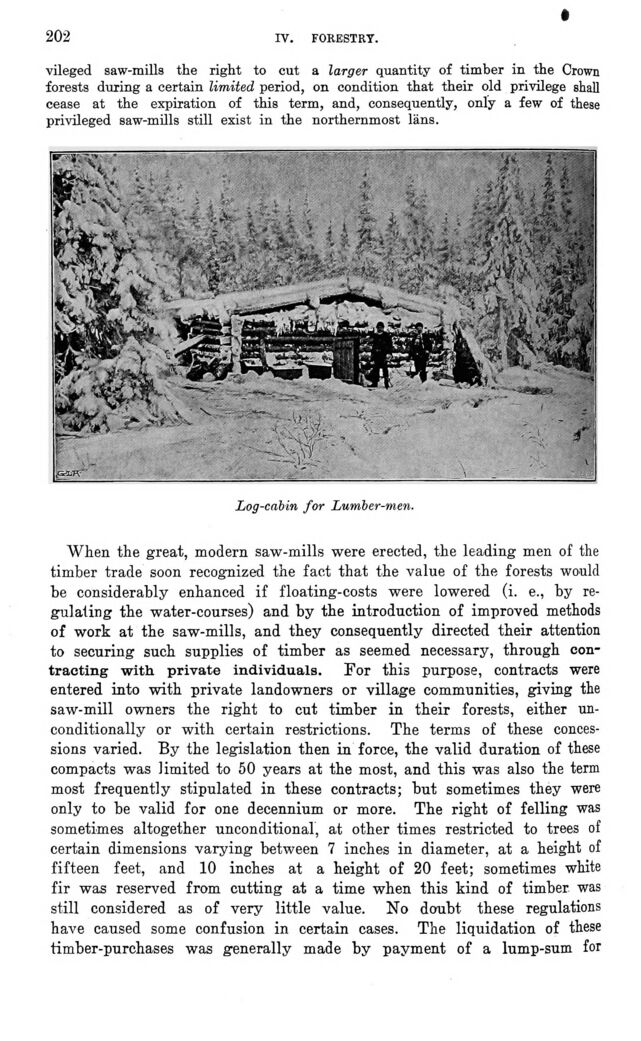
Full resolution (JPEG) - On this page / på denna sida - IV. Forestry - 2. Forest Industries. By E. Arosenius

<< prev. page << föreg. sida << >> nästa sida >> next page >>
Below is the raw OCR text
from the above scanned image.
Do you see an error? Proofread the page now!
Här nedan syns maskintolkade texten från faksimilbilden ovan.
Ser du något fel? Korrekturläs sidan nu!
This page has never been proofread. / Denna sida har aldrig korrekturlästs.
202
iv. forestry.
vileged saw-mills the right to cut a larger quantity of timber in the Crown
forests during a certain limited period, on condition that their old privilege shall
cease at the expiration of this term, and, consequently, only a few of these
privileged saw-mills still exist in the northernmost läns.
Log-cabin for Lumber-men.
When the great, modern saw-mills were erected, the leading men of the
timber trade soon recognized the fact that the value of the forests would
be considerably enhanced if floating-costs were lowered (i. e., by
regulating the water-courses) and by the introduction of improved methods
of work at the saw-mills, and they consequently directed their attention
to securing such supplies of timber as seemed necessary, through
contracting with private individuals. For this purpose, contracts were
entered into with private landowners or village communities, giving the
saw-mill owners the right to cut timber in their forests, either
unconditionally or with certain restrictions. The terms of these
concessions varied. By the legislation then in force, the valid duration of these
compacts was limited to 50 years at the most, and this was also the term
most frequently stipulated in these contracts; but sometimes they were
only to be valid for one decennium or more. The right of felling was
sometimes altogether unconditional, at other times restricted to trees of
certain dimensions varying between 7 inches in diameter, at a height of
fifteen feet, and 10 inches at a height of 20 feet; sometimes white
fir was reserved from cutting at a time when this kind of timber was
still considered as of very little value. No doubt these regulations
have caused some confusion in certain cases. The liquidation of these
timber-purchases was generally made by payment of a lump-sum for
<< prev. page << föreg. sida << >> nästa sida >> next page >>